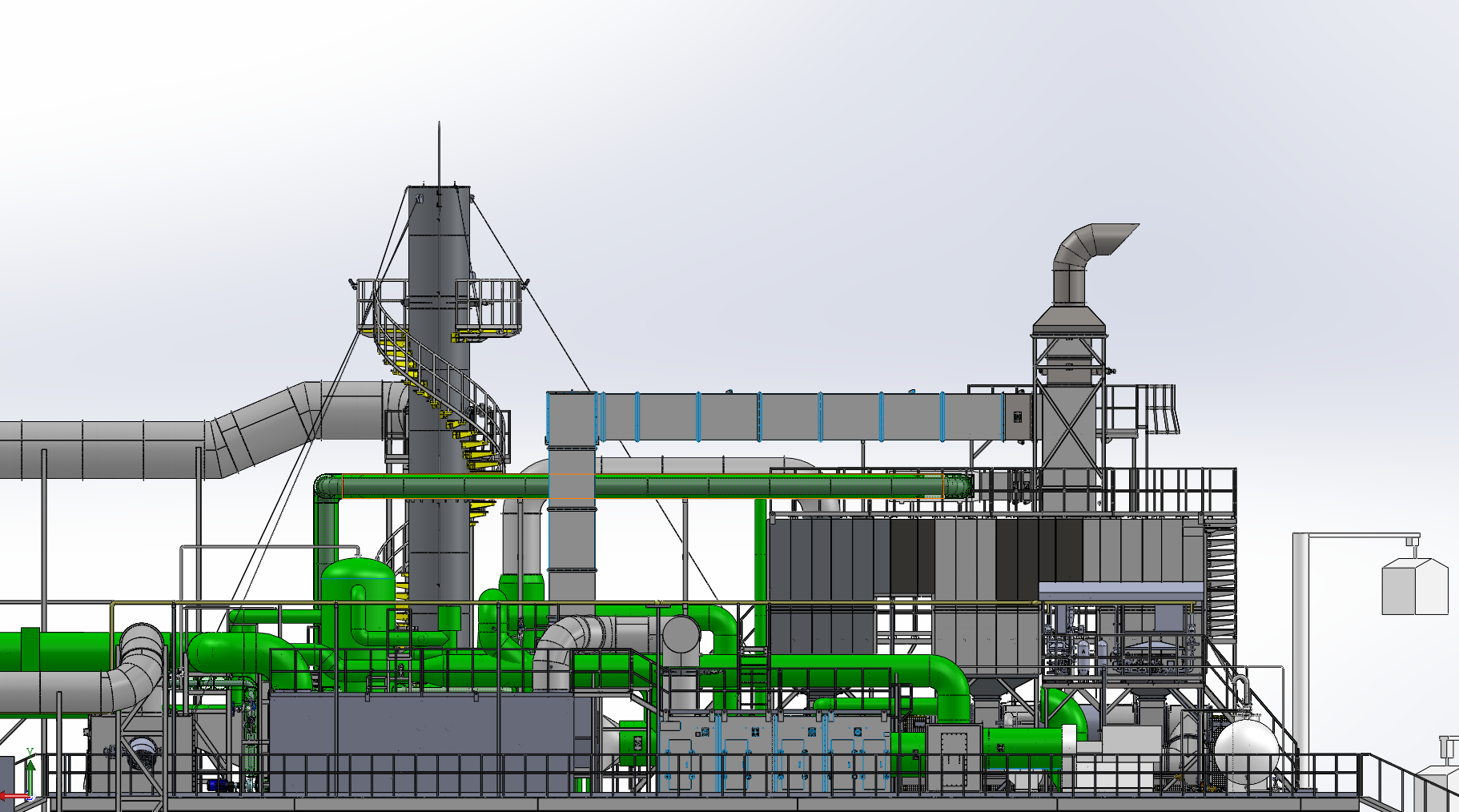
With the accumulation of the operation time of the incinerator, the negative pressure of the system will become worse, the load of the fan will become larger, and the air volume will decrease significantly. During normal operation, the pressure difference between the inlet and outlet of the RTO system is 4 000 Pa. As the blockage accumulates, the pressure difference will increase to about 7 000 Pa. At the same time, the on-line monitoring data of total non-methane hydrocarbons at the RTO flue gas outlet were more than 10 mg/L higher than the normal value. The reason for this phenomenon is that the blockage and blockage of the regenerator affect the sealing of the lifting valve, resulting in the overflow of trace exhaust gas without treatment. In order to ensure the effective treatment capacity and treatment effect of RTO, it is necessary to stop the RTO to cool down and enter the inspection and cleaning, which affects the normal operation of the RTO system. An enterprise has analyzed the composition of the blockage material of RTO combustion chamber and ceramic heat accumulator, and the main reason is the blockage of salt. Comprehensive consideration of the reasons for the formation of the blockage mainly includes the following four points:
(1) The workshop discharges a large amount of acid and alkali components into the RTO main pipe, in which acid and alkali reaction occurs to form salt. Combined with other particles in the exhaust gas, it is attached to the pipe wall, the front induced draft fan, the mist removal device, the flame arrester, the lower chamber body of the heat accumulator and other parts. Although the RTO combustion chamber or induced draft fan is equipped with a defogger, the main pipe has a fast wind speed and cannot be completely removed. The presence of acid, alkali and salt leads to serious corrosion of the main pipe and the mist remover, and even the RTO regenerator causes corrosion and peeling. The peeling of a large number of iron, silicon, aluminum and other elements aggravates the blockage of the lower chamber of the RTO regenerator.
(2) The waste gas produced by the sewage treatment system contains trace dust and sludge particles (microorganisms), and the sludge composition also contains organic matter, water, salt and phosphorus and other substances, which will adhere to the surface of the induced ventilation fan when entering the RTO, and the inorganic substances will adhere to the surface of the ceramic and combustion chamber after combustion. In addition, the waste gas produced by the anaerobic section and facultation-oxygen section of sewage treatment contains not only methane gas, but also organic acids, a large amount of ammonia, hydrogen sulfide and other gases. Salt and sulfide produced at high concentrations are easy to cause the blockage of the inlet and outlet of the RTO heat accumulator.
(3) When the exhaust gas is burned in the RTO combustion chamber, sometimes the temperature of the upper chamber body of the RTO will be overheated when the concentration and heating value of the exhaust gas are high, that is, the temperature exceeds the upper limit of 1 050 ℃. In the overtemperature environment, the ceramic heat accumulator will be damaged, the broken fragments will make the bulk density increase, reduce the exhaust gas flux, resulting in the fan load increase, and the negative pressure of the system becomes worse.

(4) The P, S and halogen gas in the exhaust gas will produce acidic gas after RTO combustion. Some RTO systems are designed to use the induced draft fan to lead the high-temperature exhaust gas into the front end of the combustion chamber to preheat the intake gas. This part of the acidic gas will corrode the RTO combustion chamber, flue gas outlet equipment, induced draft fan and the inlet pipe of the combustion chamber. The iron sulfate and ferric chloride produced by the corrosion reaction will accumulate in the RTO chamber and the ceramic heat accumulator.
Online ConsultQQ

E-mail:
info@ssecn.com